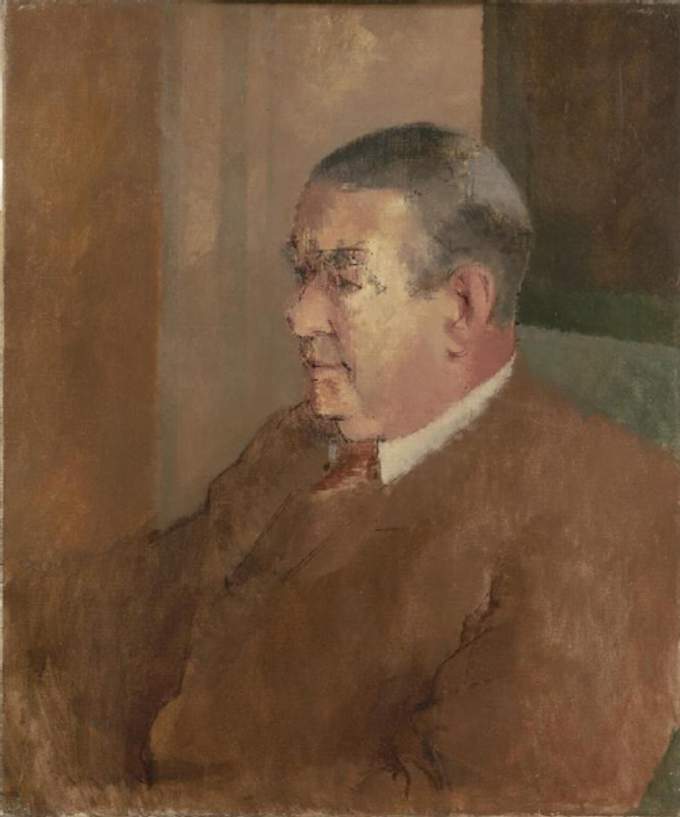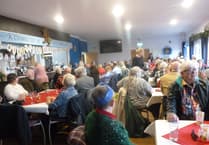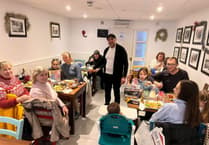While Ynyslas sand dunes are now enjoyed by all as a nature reserve, the legacy of one of World War II’s most secret research facilities remains hidden in the sand dunes and in the wartime memories of local residents.
Research conducted by the Royal Commission on the Ancient and Historical Monuments of Wales (RCAHMW) revealed, in 2012, the history of the site: “Few visitors to the Ynyslas National Nature Reserve are aware that they have entered one of World War II’s most secret research facilities – a weapons-testing range that once played a vital role in the development of rocketry, space travel, and all the associated inventions, home insulation to heart-pacemakers, which have radically changed the world we live in today.
“It was towards the end of the war that the quiet, isolated sand dunes of Ynyslas were added to the military firing ranges of Cardigan Bay.
“As the threat of invasion had long passed, the pillboxes and barbed wire entanglements installed in 1941 were pressed into service as perimeter defences, keeping the public and prying eyes away.
“HMS Camroux III, a small coaster which had been specially converted with rocket launch ramps, was anchored at Aberdyfi to provide billets for some 30 army officers during the construction phase.”
The Royal Commission spoke to many local residents about their experience of the range, and Ynyslas and Borth during wartime, with one resident, Hazel Jenkins, describing the facility as “very hush-hush”.
The Royal Commission explains the Ynyslas range was used for testing unrotated rocket projectiles, short-range rocket firing anti-aircraft weapon developed for the Royal Navy and designed by military scientists led by Sir Alwyn Crow CBE.
Meanwhile, the German military were developing long-range rockets with guidance systems – the V1 and V2 – which went on to “bring devastation to London between June 1944 and March 1945”. In response, Sir Alwyn headed up a new Guided Projectile Project and Ynyslas was nominated to provide special test facilities for the testing of rockets propelled by liquid fuels.
The range was to be called Ministry of Supply Experimental Establishment Anti-Aircraft (MOS EE AA) Ynyslas and was to be manned by nine officers and 202 ordinary ratings, under a Superintendent of Experiments.
While remnants of the facility can still be seen on the site today, many of the buildings that played a vital role in the operation still stand.
The farmhouse Moel Ynys was commandeered as sergeants’ accommodation. The gatehouse to the camp was situated near The Bungalow, which also still stands, to the south of Moel Ynys.
Other buildings, such as a bungalow which was kitted out as the Radio Room as part of of Brynellen, were later demolished.
Only one document detailing the nature of the trials undertaken in Ynyslas seems to have survived, according to RCAHMW. This is the minutes of a visit by the chairman of the Guided Projectile Working Committee, Major L W Jubb, on 2 January 1946.
During the visit, there was a tour of the existing facilities and a discussion took place on how photographic observations might be improved with Akeley and Ascania cameras. The four Assistant Superintendents of Experiments, Major Till, Captain Pubach, Captain Lodge, and a female officer responsible for overseeing staff operating the Ascania cameras, Junior Commander Biddle, attended the discussions.
The RCAHMW article states: “The minutes refer to a proposed propulsive duct or liquid-fuel propelled rocket trail for 11 January 1946 and a test of the Ascania cameras to precede this trial using Admonitor rockets from Aberporth.
“A letter from Major Jubb, dated 11 June 1946, suggests that the observer/recorders were from the Auxiliary Territorial Services (Women’s ATS) and that their commander, Lieutenant Colonel Tod, lamented the loss of their skills when they were replaced by the Royal Artillery surveyors after demobilisation.
“Two of the surviving observation posts are associated with concrete pads which may have provided the bases for Kine Theodolites, or for the simple radio beam-guidance systems.”
At the end of the war, in May 1946, the operation at Ynyslas was transferred to Aberporth. There was a range of observational methods used in Aberporth, including times by stop-watch and P.E. timer, launching velocities, position observations by window, mirrors, directors, and so on, as well as photography, including kine-theodolities and radar tracking.
The RCAHWM said it is “logical to assume many of these methods were also employed at Ynyslas”.
In March 1946, issues regarding gaining adequate observational data and a lack of adequate static testing facilities were recorded. Other countries offered larger range possibilities, such as Australia where 1,200 miles were available – 40 times the distance available at Ynyslas out over Cardigan Bay.
After the war, RAF Westcott, in Buckinghamshire, was chosen as the peacetime home of the Guided Projectile Project, with an outstation at Aberporth. The allies had managed to persuade many of the German rocket scientists to continue their work in Britain and the US, with many of them being housed in RAF Westcott and continuing to work on rocket motors until the Blue Streak missile project was cancelled in 1962.
The first seven German scientists spent two weeks in Britain being questioned by Sir Alwyn and other Ministry of Supply officials, before arriving in Boston, USA, on 29 September 1945. To maintain liaison between America and the UK, Sir Alwyn was appointed to lead the Scientific and Technical Services, in the British Supply Office in Washington, in November 1946.
Medwyn Parry, from the RCAHMW, spoke to a resident, David Williams, about his time at the camp where his father worked as an on-site plumber.
“I spent a lot of time snooping around, looking at things, nobody ever seemed to mind,” David explained.
“Trouble is, in those days you just snooped and didn’t absorb it all for the future. Nobody really knew, I don’t think, apart from the boffins what actually was done there.
“So there was all sorts of crashings, bangs, explosions, and whizzes and things, and you just got on with what you were doing.”
David recounted to Medwyn his memories of an incident where an aeroplane landed on Borth beach in 1942.
David said an aeroplane, used for “towing air-borne targets”, used to fly up and down parallel to Borth beach, from Tywyn, and eventually became “part of the scenery” for local residents.
But David said the aeroplane that landed on the beach was actually a Hawker Henley on loan to Rolls Royce as a test bed for the vulture engine.
“The engine broke down and it landed in Borth and they had to put another engine in.
“That also broke down. Almost immediately after that, they planted railway lines all along the beach.
“Whether that was coincidence or not – or whether they thought ‘if we could land here, the Germans could land too’.”
David also spoke of another incident when a navy aeroplane, a Miles Martinent, got lost in the fog on a journey form Belfast to Plymouth and hit a bank just behind Borth.
“Luckily his angle hit the bank and skidded up the bank. It lost it’s wing and survived. The pilot lost an eye and injured his leg. I went to see him in the hospital a couple of times. Clive Merell his name was.”
David said there were a few hundred people working at the Ynyslas range but “very few locals”.
“A handful of women were involved in putting either propellants or whatever into shells or small missiles of some sort. They were there for a while. But I don’t suppose they had the faintest idea of what they were doing or they wouldn’t have been told anyway.
“One or two local tradesman, there was a carpenter there – a local carpenter who worked for a local builder’s firm – he spent nearly all his time repairing the glass windows that used to shatter when they used to fire some of the big guns and things there and spent nearly all his time replacing the glass windows.”
At the end of the war, David said people “were anxious to get the place closed down”, particularly those whose properties were in the camp and had been commandeered by the army.
Another resident, Angus Snow, described the view of the facility from Borth beach: “If you stood on the top of the pebble bank at Borth you could look down the whole three-mile length of the beach and the whole strand bristled like some surreal bed of nails with these iron rails.
“Once, staying with Uncle Vaughan, my cousin John lent me his fairy cycle and we cycled up the beach to Ynyslas. Here, near the Dovey estuary, where there were sandhills and no marsh behind them, a mesh metal fence had been erected that ran inland in one direction and into the sea in the other.
“The fence was hung with notices, ‘Danger’ and ’Keep Out’. And peering through the fence, you could see the concrete pill boxes for the coast guards along the sandhills’ edge. The sands were smooth and sinister and empty, and the whole beach was mined.”





Comments
This article has no comments yet. Be the first to leave a comment.